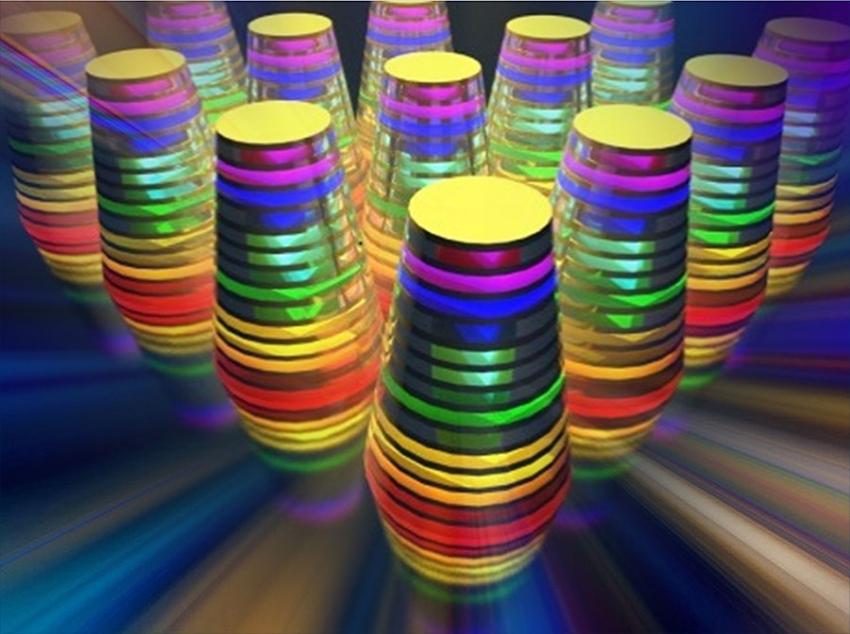Conversion of Waste Heat to Energy Can Revolutionize Photovoltaic Cells
Ground-breaking research at University of Buffalo has opened doors for engineers to new possibilities in field of thermal energy, solar power and energy conversions. The paper titled “Broadband absorption engineering of hyperbolic metafilms patterns†describes the use of multi-layered waveguide taper array which is a microchip component that allows chip to trap and absorb light.
Unlike current chips, the waveguide tapers (shown in image above), slows down and absorbs light of each frequency to catch a rainbow of wavelengths or broadband light. Qiaoqiang Gan, the lead researcher explained that they first predicted that multi-layered tapers can absorb light more sufficiently and now they have successful experiment results to prove the same. The research could be extremely crucial for thin-film solar technology and also for recycling thermal energy. Thermal energy is generated as everyday by-product in industries and in electronic devices like smartphones, tablets and laptops.

The core component of the research is the multi-layered taper made up of ultra-thin layer of metal, semiconductors and/or insulators. The so-called hyperbolic metamaterial can absorb the light in between pair(s) of layers. The taper can be tuned to various frequencies of light by adjusting the geometry and thickness.
The phenomenon can be applied to popular thin film photovoltaic cells. A major drawback of these cells is that they don’t absorb as much light as traditional solar cells do. However with these taper structure, the cells could absorb visible light as well as infrared spectrum. This could definitely boost the amount of energy generated by photovoltaic cells.
Do share with us your thoughts on other applications where this can be applied.
Source: #-Link-Snipped-# | #-Link-Snipped-#
Unlike current chips, the waveguide tapers (shown in image above), slows down and absorbs light of each frequency to catch a rainbow of wavelengths or broadband light. Qiaoqiang Gan, the lead researcher explained that they first predicted that multi-layered tapers can absorb light more sufficiently and now they have successful experiment results to prove the same. The research could be extremely crucial for thin-film solar technology and also for recycling thermal energy. Thermal energy is generated as everyday by-product in industries and in electronic devices like smartphones, tablets and laptops.

The phenomenon can be applied to popular thin film photovoltaic cells. A major drawback of these cells is that they don’t absorb as much light as traditional solar cells do. However with these taper structure, the cells could absorb visible light as well as infrared spectrum. This could definitely boost the amount of energy generated by photovoltaic cells.
Do share with us your thoughts on other applications where this can be applied.
Source: #-Link-Snipped-# | #-Link-Snipped-#
0
